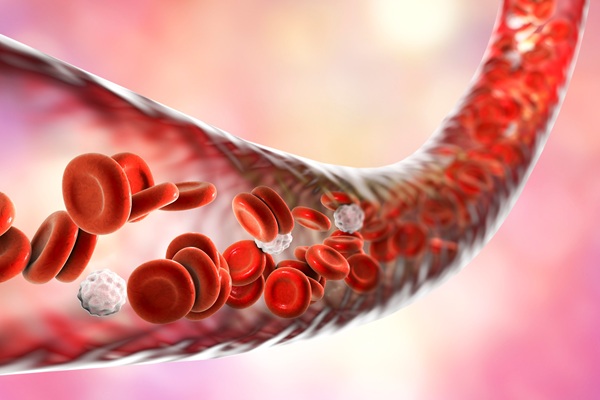Hand-Held Device Detects Antigens on Bacterial Surfaces
By LabMedica International staff writers
Posted on 24 Nov 2009
A quality control test detects bacterial contamination in whole blood-derived, pooled platelets prior to transfusion.Posted on 24 Nov 2009
The platelet pan genera detection (PGD) test targets common antigens found on the surface of all species of bacteria known to be pathogenic to humans. It consists of an easy-to-use disposable handheld device, similar in size and appearance to a pregnancy test, and reagents that work together to detect the presence of bacterial contaminants in platelets.
Bacterial contamination in platelets is a serious threat to transfusion safety. More than 5 million platelet doses are transfused annually worldwide. Studies show that up to 1 in 2,000 doses may contain bacteria, which can cause a range of reactions, including death, especially in immune-compromised patients.
The U.S. Food and Drug Administration (FDA; Silver Spring, MD, USA) cleared the Verax Platelet PGD test as a quality control test to detect bacterial contamination in whole blood-derived, pooled and single donor platelets prior to transfusion. Fenwal (Lake Zurich, IL, USA) is the exclusive global distributor of the test, which was developed by Verax Biomedical (Worcester, MA, USA). The test can be performed in approximately 30 minutes and is designed for use in hospitals, cancer centers, and other sites of care as a safeguard before transfusion.
Platelets are collected from whole-blood donations or via apheresis. With whole-blood donations, platelets from four to six whole-blood donors are pooled to produce a single, transfusion dose. In an apheresis platelet donation, a single donor can give one or more transfusion doses of platelets via a machine such as the Fenwal Amicus separator.
The international blood transfusion association AABB issued an Association Bulletin in July 2009 stating, "After publication of data sufficiently robust to support application of an assay appropriate for use near the time of platelet issue, the current standard will be reappraised. At that time, AABB intended to promulgate an interim standard to require enhanced methods of bacterial detection in whole blood derived (WBD) platelets--either by specifically prohibiting the use of less sensitive methods such as pH or glucose, or by establishing a minimum sensitivity level for methods used to detect bacteria." The Verax Platelet PGD test is an example of such an assay.
"Until now, there was no rapid test cleared by the FDA for detecting bacteria in whole-blood derived platelets," said Louis M. Katz, M.D., chair of AABB's Task Force on Bacterial Contamination. "With such a test now available, we will reexamine the current Standards regarding methods to limit and to detect bacteria in all platelet components.''
Recent studies, including post-market surveillance from Verax, show that up to 70% of units containing bacteria may escape detection by culture testing, which occurs following collection when bacteria may still be at levels too low for detection by culture sampling. The Verax Platelet PGD test is used within a few hours before transfusion, when bacteria, if present, have had a chance to grow to higher, more threatening levels.
"We are pleased that Verax has received clearance for use of the Platelet PGD test on whole blood platelets," said Darrell Triulzi, M.D., medical director of the Institute for Transfusion Medicine and the University of Pittsburgh Medical Center's Division of Transfusion Medicine (Pittsburgh, PA, USA). "We are a large user of pooled platelets and have sought a more sensitive method for bacterial screening. The Verax test from Fenwal fills this role with a point-of-issue test that we are confident will reduce the risk of bacterial-contamination reactions. Our preliminary experience indicates that it works well in the transfusion service work flow and that the technologists who administer the test find it easy to use."
Related Links:
AABB
U.S. Food and Drug Administration
Fenwal
Verax Biomedical
University of Pittsburgh Medical Center













